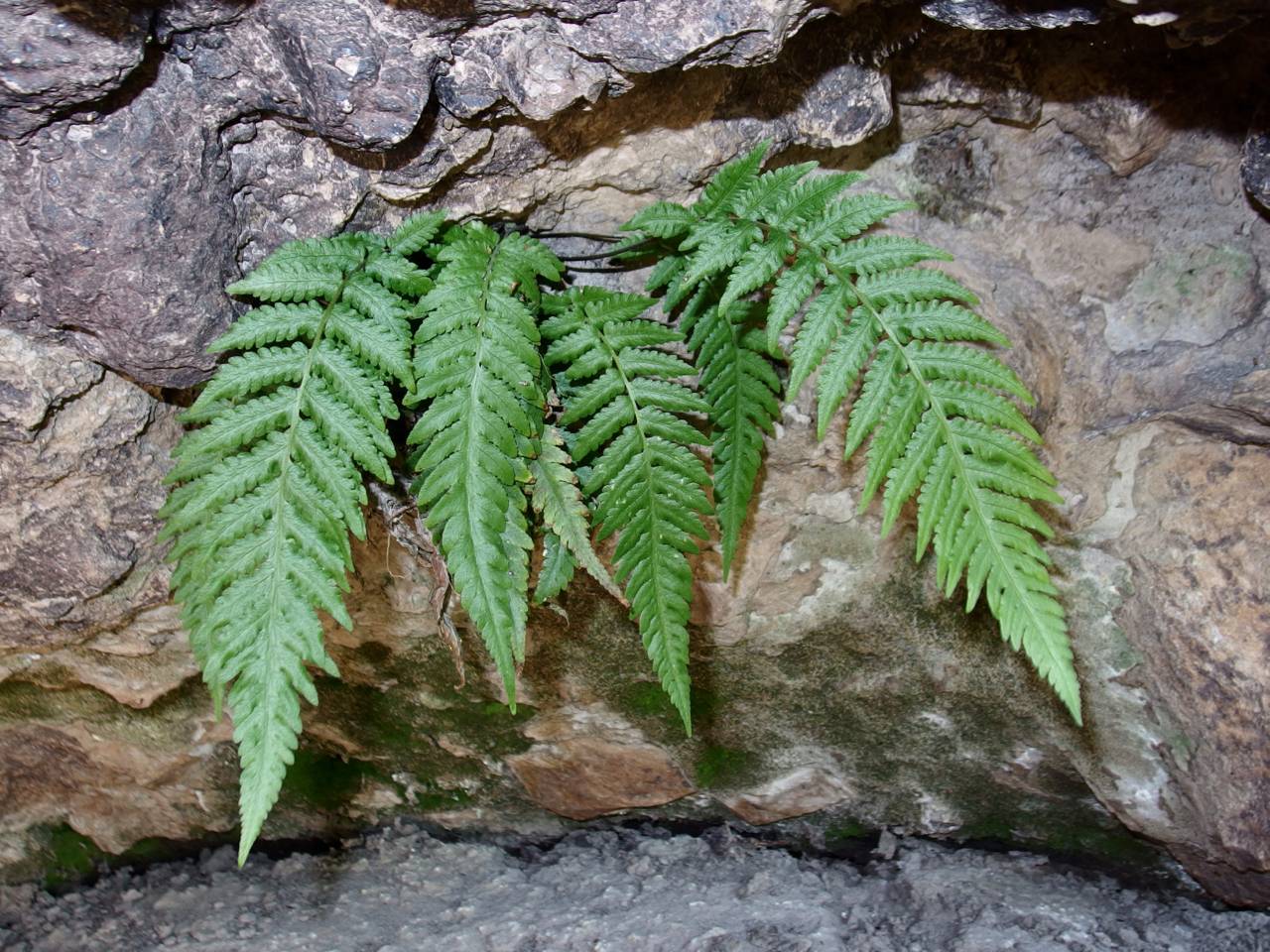Thelypteris
|
Family: Thelypteridaceae |
Stems long-creeping to ascending to erect, 1.5--12 mm or more diam. Blades 1-pinnate to pinnate-pinnatifid, rarely 2-pinnate, proximal pinnae reduced or not, apex commonly gradually reduced, infrequently abruptly reduced and pinnalike; pinnae entire to deeply pinnatifid, sessile or short-stalked; costae grooved adaxially; buds absent or uncommonly present in axils of pinnae; veins free to regularly anastomosing, commonly simple (1-forked in a few species, e.g., Thelypteris palustris ) and reaching margin; indument various abaxially, often of simple or branched hairs on blades, rachises and costae with or usually without scales. Sori round, oblong, or elongate along veins, commonly medial to supramedial; indusia round-reniform, large (ca. 1 mm diam.) and persistent or sometimes small (less than 0.3 mm diam.), occasionally ephemeral, sometimes absent; sporangial capsules glabrous or occasionally hairy. x = 27, 29, 31, 32, 33, 34, 35, 36. In the broadest sense, Thelypteris is a very large and complex genus of about 900 species and constitutes the only genus in the family. It has been divided into ca. 30 genera by R. E. Holttum (1971, 1982); these are treated as subgenera and/or sections by various workers. In the treatment adopted here, the genus is broadly circumscribed but excludes the small segregate genera Phegopteris and Macrothelypteris , two of the most distinctive elements. The subgroups of Thelypteris (treated as genera by some workers) are indicated in the key to species and by their subgeneric names preceding the treatment of species groups. The name to be used if a narrowly circumscribed segregate genus is adopted is included in the synonymy.
RHIZOMES: slender to stout, short- to long-creeping, densely scaly toward the tip, the scales strongly bicolorous, somewhat clathrate. LEAVES: closely to relatively widely spaced, evergreen in ours. PETIOLES: shorter than to about as long as the blade, usually grooved adaxially. BLADES: herbaceous to somewhat papery, ovate to ovate-triangular, pinnate-pinnatifid. PINNAE: linear, acuminate at the tip, with numerous lobes, the margins otherwise entire, hairy, sometimes also inconspicuously scaly. VENATION: free or with opposing veinlets fusing into 1 or more chevron-like areoles below the sinus between 2 adjacent pinna lobes, sometimes meeting at the sinus. SORI: positioned along the veinlets, appearing in ours as a single row on either side of the costules, circular in outline. INDUSIA: circular-reniform in ours, often withering or shed prior to soral maturity. SPORANGIA: with the capsule glabrous or pubescent with needle-like trichomes. X = 27-36 NOTES: 860-900 spp., nearly worldwide. (Greek for “female” and “fern”). REFERENCES: Yatskievych, G. and M.D. Windham. Vascular Plants of Arizona: Thelypteridaceae. CANOTIA 5 (1): 49-52, 2009. Petiole stramineous, with 2 bundles that unite below the blade; lvs bipinnatifid or pinnate-pinnatifid, sparingly or not at all scaly, pubescent with acicular, unicellular hairs, at least on the upper side of the rachis, often also on the costae; rachis grooved, the marginal ridges continuous, elevated above the insertion of the costae; veins free, reaching the margins, running into the teeth (if present); sori intramarginal, each borne on a vein that continues to the margin; indusium when present small and inconspicuous, hyaline, often ciliate and/or glandular, reniform or horseshoe-shaped, attached at the sinus on the basipetal side of the sorus, or in some spp. wholly wanting; medium-sized wood-ferns with scattered, thin, light green, deciduous lvs and long, slender, blackish, sparingly (seldom densely) scaly rhizomes. 500+, cosmop. Gleason, Henry A. & Cronquist, Arthur J. 1991. Manual of vascular plants of northeastern United States and adjacent Canada. lxxv + 910 pp. ©The New York Botanical Garden. All rights reserved. Used by permission. |

